From our assembly point at the the University of the Philippines Visayas, we were driven 36 kms., past the towns of Oton, Tigbauan and Guimbas, to the town of Miag-ao, the first destination in our itinerary, where we made a short stopover at the town’s Church of St. Thomas of Villanueva for some photo ops.
My visit here completed my wish list, that of visiting all 4 Philippine churches that have received international acclamation by being included in the UNESCO (United Nations Educational, Scientific, and Cultural Organization) World Heritage List. The others I’ve already visited are the Church of St. Augustine in Paoay (Ilocos Norte), the Church of Our Lady of the Assumption in Sta. Maria (Ilocos Sur) and the San Agustin Church in Intramuros (Manila).
The town’s unique and magnificent, fortress-like church is the third church edifice constructed since the foundation of the parish in 1731. The first church, built near the Tumagbok River in Ubos around 1734, was burned and looted by Moro raiders in 1741. The second, built by Fr. Fernando Camporredendo from 1744 to 1750, was burned by pirates who looted the town on May 1754. To prevent a repetition, the present church was built on a hill (called Tacas) with a commanding view of the Miagao River (where the raiders usually come from).
Started in 1786 by Augustinian Fr. Francisco Maximo Gonzales, its huge stones were quarried from Sitio Tubo (San Joaquin) and Igbaras and were supervised by maestro de obras from Igbaras. The church was completed in 1797.
The church was partially restored by Fr. Agustin Escudero in 1864 and its interior was decorated by Fr.Jose Sacristan in 1880. It was damaged at different times by fire during the revolution in 1898, the Philippine-American War and again in 1910. After the powerful January 5, 1948 earthquake, it was immediately restored by Monsigñor Wenceslao Enojo and again from 1959 to 1962 by Monsigñor Leonardo Javillo and the National Historic Institute under Chairman Esteban A. Ocampo.
A historical marker was installed by the National Historical Commission, under Director Luis Montilla, on February 16, 1963 to underscore its historical and artistic value. The church was declared a National Landmark on August 1, 1973 by virtue of Presidential Decree No. 260 and in 1994, was listed by the UNESCO as one of the world’s cultural heritage sites.
This church is one of the finest examples of peripheral Baroque architecture in the country and its facade blends various architectural tendencies into one local religious art style. Its superbly-carved, high relief stone facade, embellished with naif folk motifs, features the giant St. Christopher dressed Filipino-farmer style with his pants rolled up, carrying the Infant Jesus on his shoulders across an invisible river, amidst large coconut palms and fruit-laden papaya and guava trees which symbolize fertility.
All these are reminiscent of Aztec art. Its massive, 4-m. thick walls made of honey-colored sandstone have heavy, round buttresses built to withstand earthquakes and Moro pirate raids. The first and second levels and the integrated triangular pediment (with two oblong windows at its base) are separated by decorative balusters and the heavily drawn frieze. The simple semicircular arched main entrance is flanked by columns and statued niches and crowned by a huge stylized acanthus and a very ornately designed statued niche.
The church is flanked by two massive, gradually tapering and medieval castle-like square bell towers. Its corners are strengthened by 3/4 circular buttresses. Both are dissimilar in height because of design changes. One has a high pointed roof while the other has a low-pitched roof. One has four levels and the other, three. The left tower’s extra storey was added in 1839 by Fr. Francisco Perez (parish priest from 1827 to 1864). The church’s simple interior is highlighted by a striking gold-plated retablo.
How To Get There: Miagao is located 40.04 kms. from Iloilo City, 12.2 kms. from San Joaquin and 8 kms. from Guimbal.

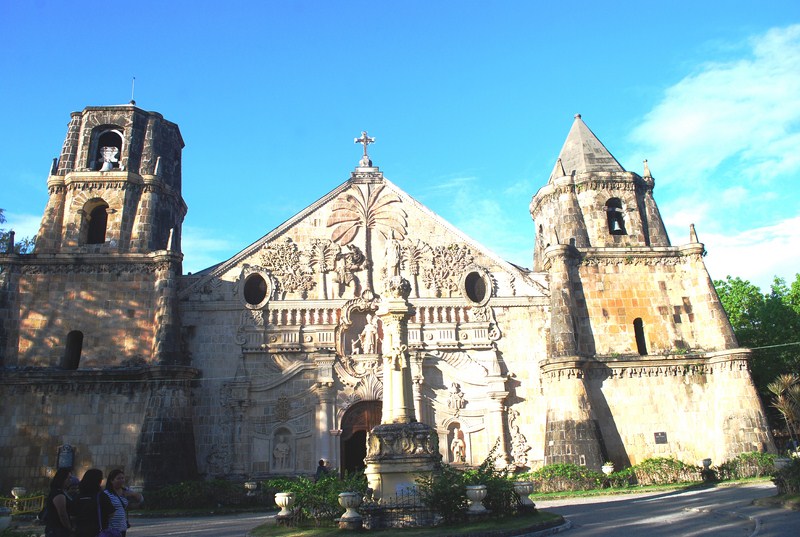
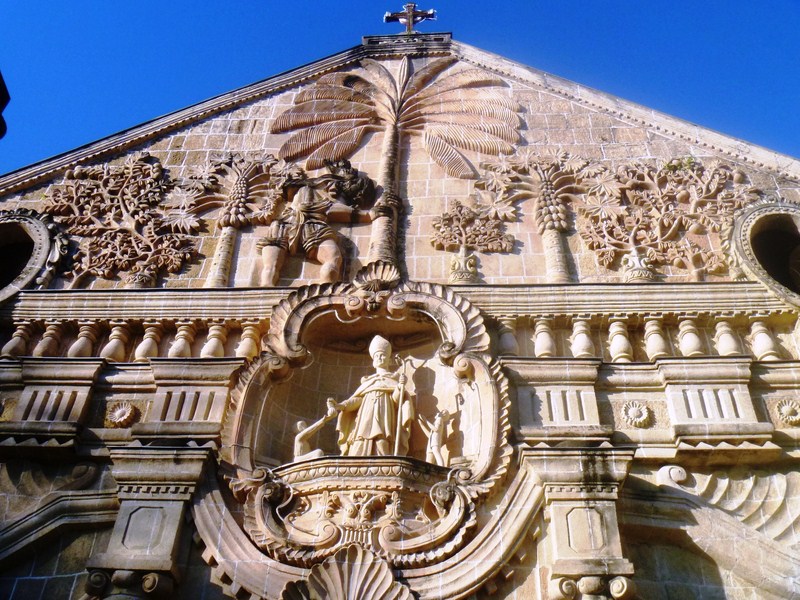
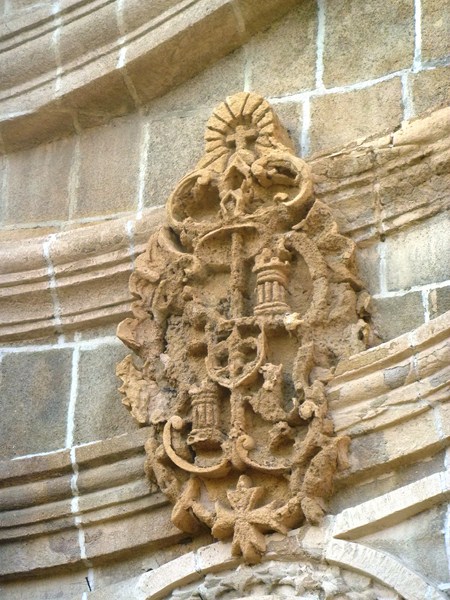
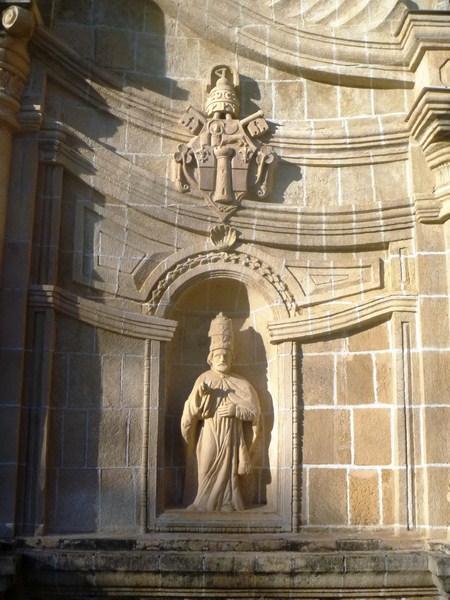
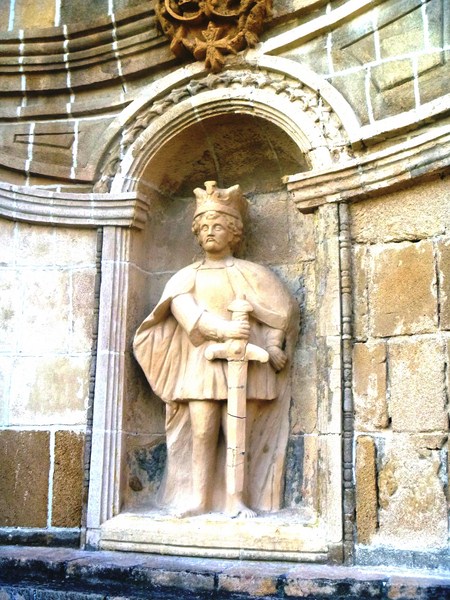
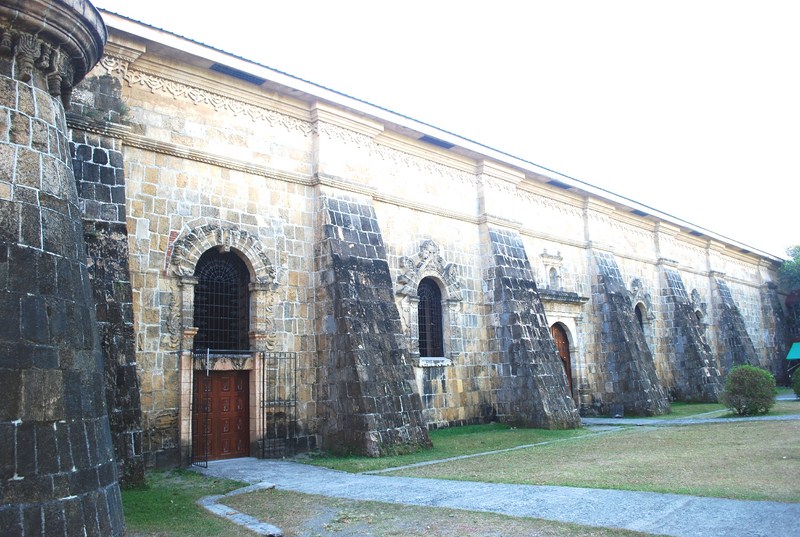
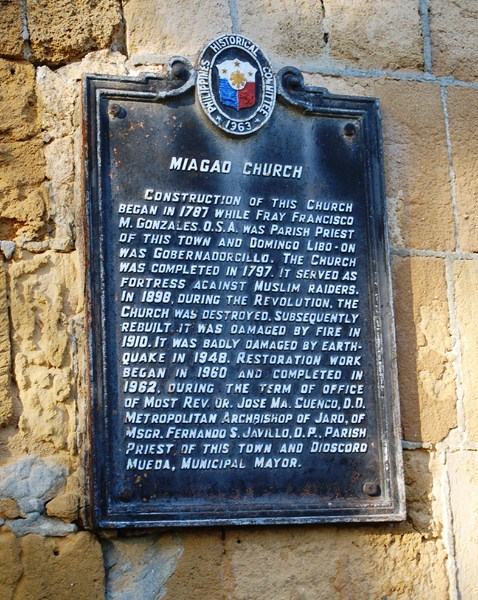
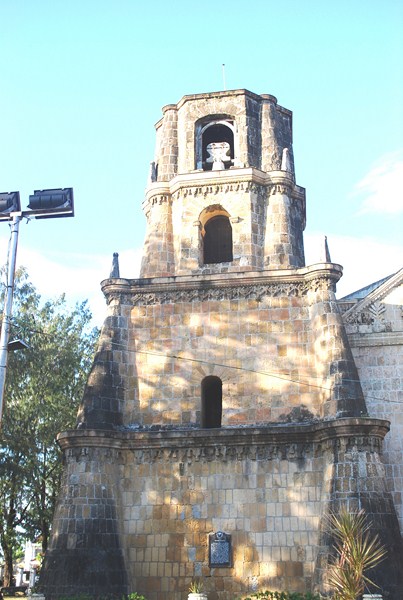
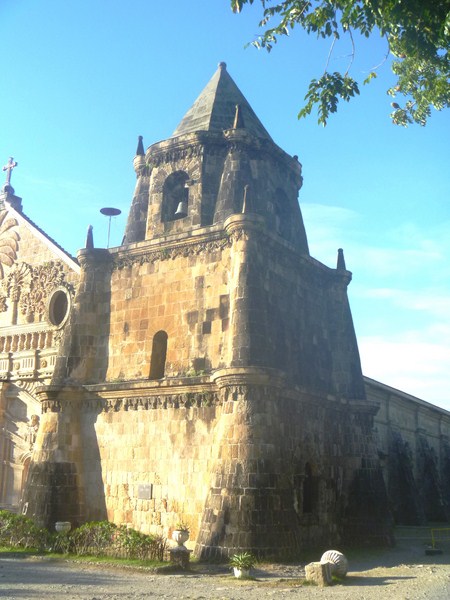
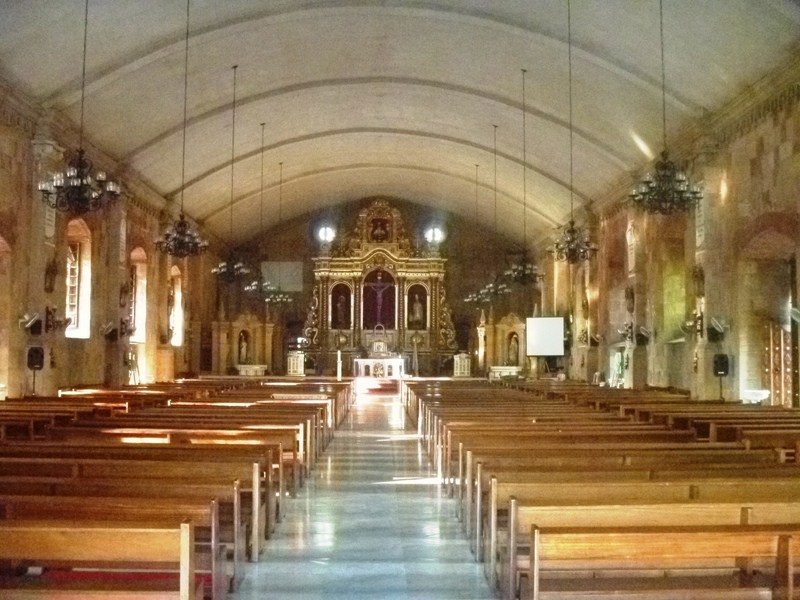
Pingback: URL